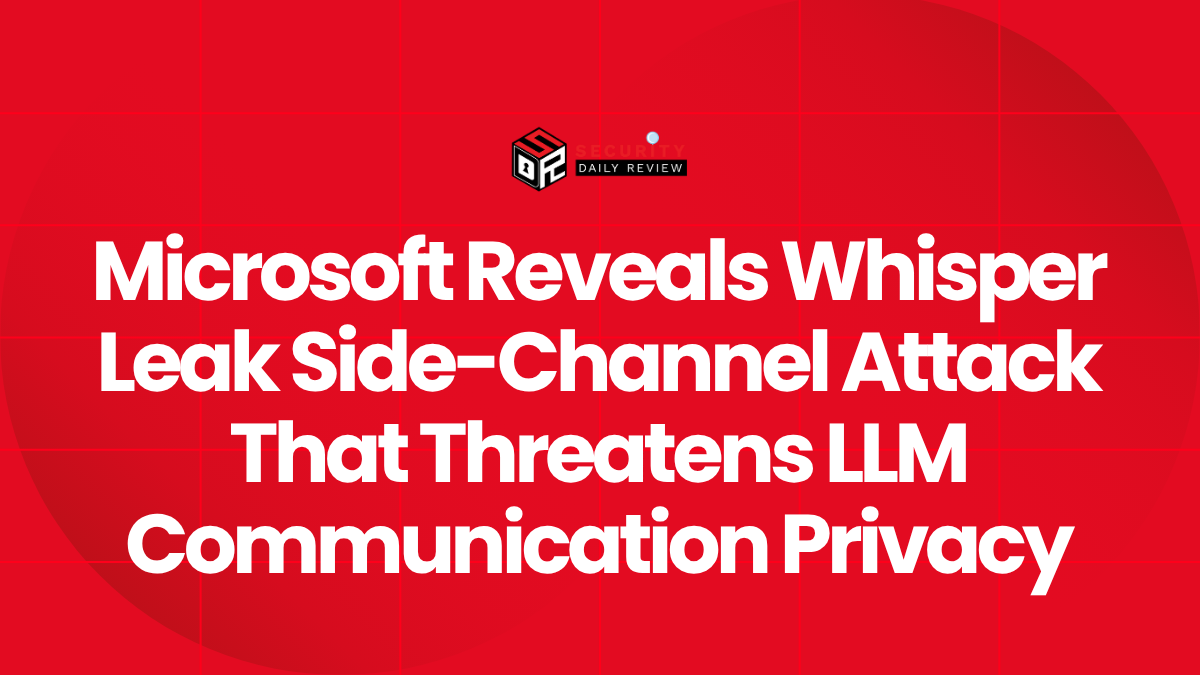A newly disclosed side-channel vulnerability, dubbed Whisper Leak , reveals a concerning privacy risk in encrypted communications with remote large language models (LLMs). Microsoft’s security researchers uncovered that attackers can infer the content of AI-assisted conversations—even when protected with HTTPS encryption—by analyzing subtle network patterns. The discovery highlights a broader category of threats where metadata leakage compromises confidentiality, raising concerns about the security of language model interactions in enterprise and consumer settings alike.
Attack Targets Encrypted Conversations With Language Models
Whisper Leak Demonstrates How Side-Channel Observations Can Break AI Privacy
Microsoft’s warning revolves around an attack vector that does not need to decrypt actual ciphertext. Instead, the Whisper Leak side-channel attack allows adversaries who can monitor network traffic to infer the substance of conversations between users and cloud-based LLMs, such as OpenAI’s ChatGPT or Azure-hosted models.
The method exploits uniquely identifiable patterns in packet sizes and response timing. Even when all communication occurs over HTTPS, revealing theoretically nothing about the content itself, attackers can cross-reference known query-response behaviors to deduce what topics might have been discussed.
HTTPS Encryption Alone Is Not Sufficient
Metadata Within Encrypted LLM Traffic Still Leaks Sensitive Signals
Encryption protocols like HTTPS are designed to secure content-in-transit; however, they do not anonymize or obfuscate metadata like:
- Packet sizes
- Timing and frequency of requests
- Length of responses
An attacker observing this metadata can perform pattern matching to correlate observed request-responses with known LLM interactions. For instance, if a particular query causes a response of a certain size and latency, an observer could identify the topic even without access to the content.
Microsoft tested Whisper Leak on various LLM services and found that:
- Over 90% of user prompts could be inferred based on traffic patterns
- Even slight response length variations were enough to reconstruct partial queries
- Attacks were effective across multiple cloud inference APIs
Implications for AI Safety Across Numerous Use Cases
Enterprise, Government, and Healthcare Sectors Are at Elevated Risk
The implications of Whisper Leak extend far beyond casual users. Many organizations rely on cloud-based AI for:
- Customer service automation
- Document summarization and legal analysis
- Medical transcription and consultation
- Secure internal data interpretation
These interactions often include highly sensitive information, and metadata leakage via Whisper Leak could expose:
- Patient diagnoses
- Legal strategy documents
- Classified research efforts
For enterprise use cases, attackers do not need to compromise internal systems directly—the mere ability to monitor external traffic (for example, via compromised routers, telecom providers, or nation-state surveillance) could expose valuable insights.
Microsoft Recommends Mitigations but Warns the Root Cause Is Architectural
Buffered Responses and Constant-Length Padding Offer Temporary Relief
To mitigate Whisper Leak attacks, Microsoft suggests that AI service providers adopt:
- Traffic shaping techniques , including response buffering and randomized delays
- Fixed packet and response sizes , which limit correlation between content and observed traffic
- Use of local LLM deployments , reducing dependency on cloud traffic
However, Microsoft emphasizes that these measures are stopgaps , not long-term solutions. The attack stems from an architectural vulnerability that is common to many encrypted real-time systems, not just LLMs.
“Whisper Leak offers a compelling example of how even encrypted channels can result in significant data leakage through side-channel vectors,” the Microsoft Security Response Center (MSRC) stated.
Long-term solutions may require changes to the design of encryption protocols and traffic transmission models, possibly creating modes of encrypted interaction that fully obscure message lengths and access patterns.
Broader Cybersecurity Lessons From Whisper Leak
Side-Channel Attacks Are Growing More Sophisticated and Targeted
Whisper Leak showcases an evolution in the attack landscape, where adversaries move beyond breaking encryption and instead exploit implementation-level behaviors. It echoes earlier side-channel vulnerabilities like:
- Differential power analysis in hardware
- Timing side channels in cryptographic algorithms
- Page fault-based inference in CPU caches
The rise of AI-as-a-Service exacerbates these risks. Each query and response represents a new surface for information leakage. As LLMs become embedded in critical workflows, securing the communication channels around them becomes just as important as securing the models themselves.
Final Thoughts: Privacy in the Era of AI Requires More Than Encryption
Securing LLM Interactions Call for Reimagining Data Flows, Not Just Adding Layers
Whisper Leak reminds security professionals that privacy guarantees are only as strong as their weakest metadata trail. Encryption remains a necessary but insufficient defense as adversaries develop passive analysis techniques based on traffic fingerprinting.
In a world increasingly reliant on remote AI models, protecting user privacy will require enhanced defenses including:
- Local inference for sensitive data
- Traffic normalization at protocol levels
- Rethinking cloud-LMM communication architectures
As more organizations integrate LLMs into their workflows, understanding vulnerabilities like Whisper Leak will be vital to managing evolving cybersecurity risks.









